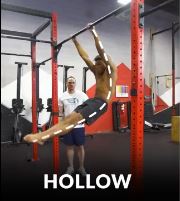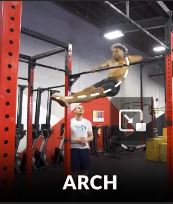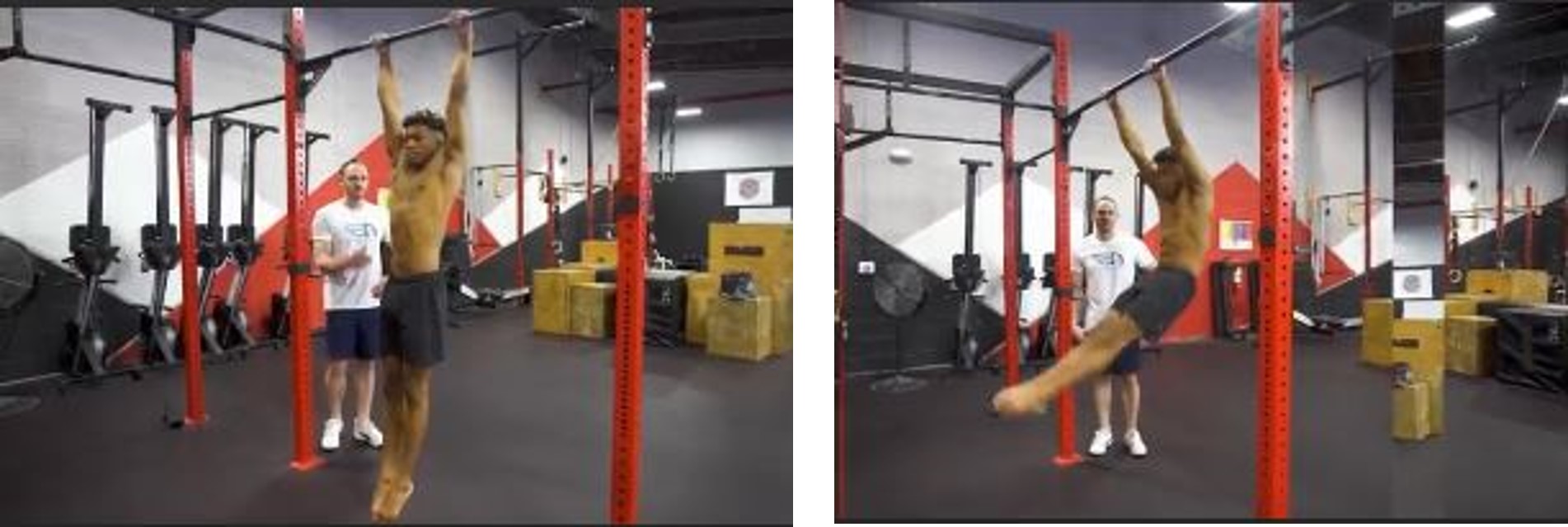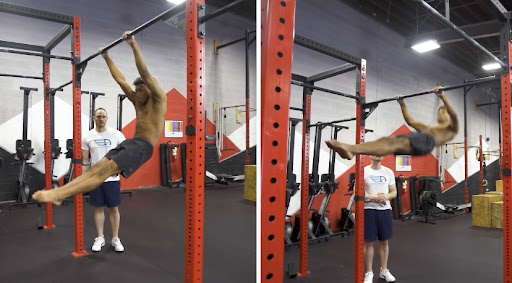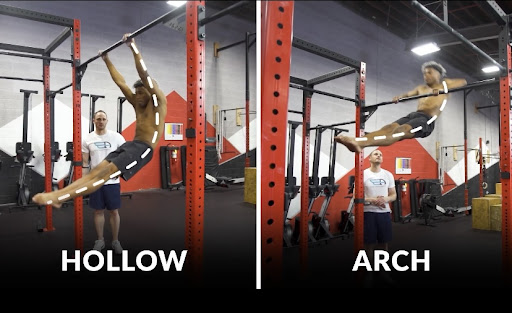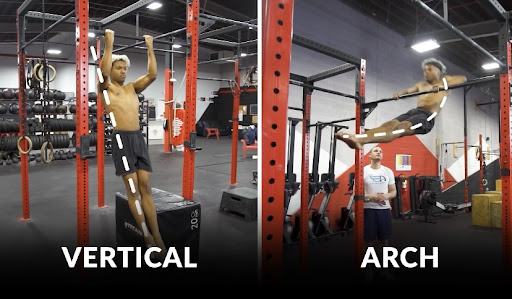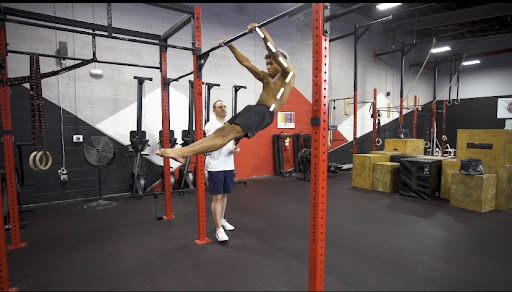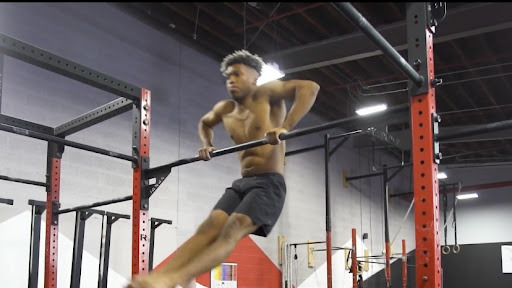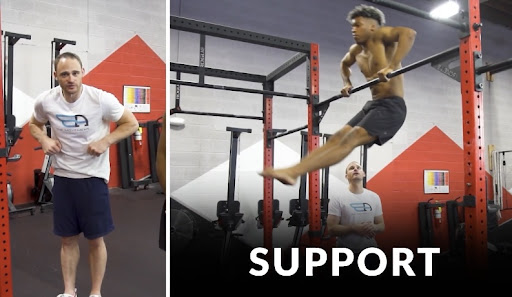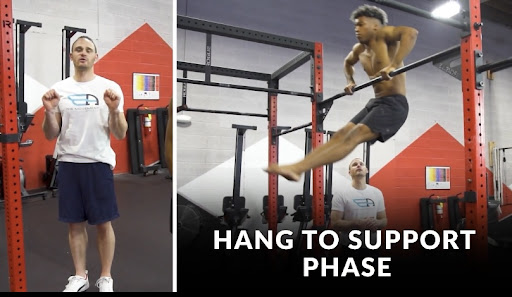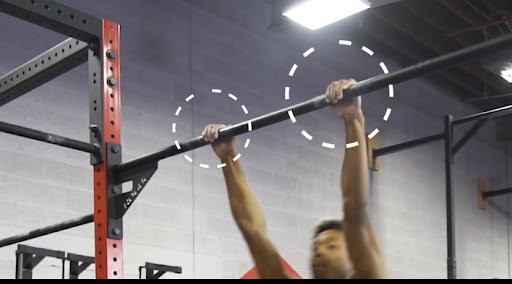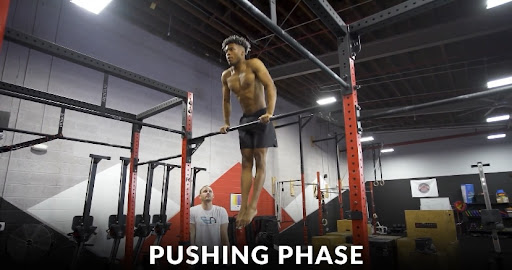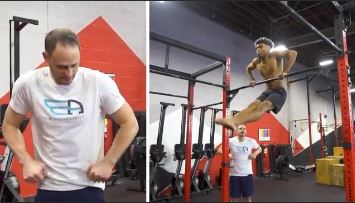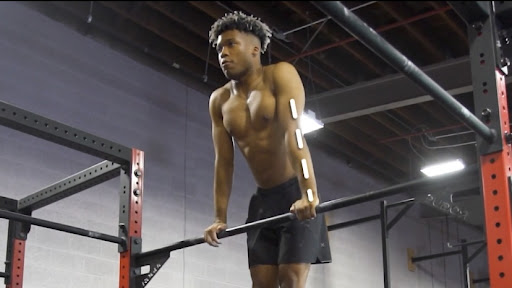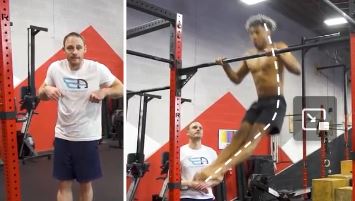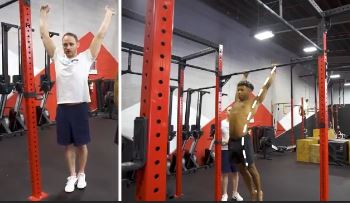Have you ever marveled at the seemingly effortless grace of athletes performing kipping muscle-ups on the bar?🙌 Their fluid movements and incredible strength and coordination make it look like a mesmerizing dance between body and bar.
You might wonder, How do they achieve such mastery on kipping muscle ups? They achieve such perfect kipping muscle-ups through practice, dedication, and mastering the kipping technique.
This article will unlock the secrets behind this captivating skill of kipping 📍muscle-ups with perfect form.
🤔What is Kipping?
Kipping is a dynamic movement technique used in various fitness disciplines, notably in gymnastics and functional fitness workouts. It involves creating momentum through rhythmic swinging motions to achieve a desired movement or exercise. The kipping technique is often employed to perform pull-ups, muscle-ups, and toe-to-bar exercises.
During a kipping movement, the athlete generates momentum using the hips and core to create a swinging motion. This momentum is transferred into the desired exercise, allowing for more repetitions or making the movement easier to execute than a strict, slow, or controlled version.
🔎What is Kipping in Calisthenics?
In 📍calisthenics, “kipping” builds momentum and makes some exercises more effective. It involves using a swinging motion of the body to assist in executing movements like pull-ups, muscle-ups, 📍dips, and toes-to-bar.
During kipping movements in calisthenics, athletes initiate the motion by engaging their core and hips to create a rhythmic swing. This swinging action generates momentum, which is transferred into the desired exercise, allowing for a faster and more fluid movement.
When used responsibly and under appropriate guidance, kipping can be a valuable addition to a calisthenics training regimen, enabling athletes to achieve their fitness goals and challenge themselves in new and exciting ways.
Read the next section to learn how to perform kipping muscle-ups perfectly on the bar.👇
🔥Achieving the Perfect Kipping Muscle-Up on the Bar
Mastering the art of kipping in calisthenics involves more than just swinging back and forth like a human pendulum. It is crucial to focus on seven key areas to conquer this dynamic technique and unlock its full potential. These areas will ensure that your kipping movements are efficient and effective and help you avoid unwanted aerial acrobatics!
Here you can watch a full video:
⚡️The Prerequisite
Before attempting kipping muscle ups, having a strong hollow and arch position is an essential prerequisite. These foundational body shapes form the basis of the kip swing and are crucial for generating the necessary momentum to execute a successful kip muscle up.
✅Hollow Position: The hollow position in calisthenics involves creating a C-curve shape with your body. Your shoulders and feet are slightly off the ground, and your lower back is pressed into the floor. This position engages your core and keeps your body tight and stable.
✅Arch Position: The arch position is the opposite of the hollow position. In this stance, your chest and thighs are off the ground, and your body forms an arched shape. Your shoulders are back, and your hip flexors are engaged.
✨7 Important Areas to Focus
👊Mount and Starting Point
The kipping muscle up can begin either from a hang position or by generating some initial swing by standing behind the bar and jumping onto it. It’s essential to adopt a shoulder-width grip or slightly wider for optimal control during the movement.
👊Kip Swing
The kip swing generates momentum to provide a biomechanical advantage, making the muscle up easier than a strict dead hang. It creates two distinct body shapes – the hollow and the arch. Keeping your body tight and compact facilitates a more effective power transfer into the pull-up. The arched position should be seen in front of the bar, while the hollow position appears behind the bar.
👊Elevation and Pathway
Unlike regular 📍pull-ups, the kipping muscle up follows a curved or arced pathway instead of a straight up-and-down motion. Push down on the bar with straight arms after swinging through the hollow shape to achieve this pathway. As you swing, the shoulders should move further behind the bar and elevate, similar to the motion of a front lever.
👊Pull-Up Phase
The pull phase in the kipping muscle-up is a unique combination of two fundamental movements – the body row pull and the pull-up. This hybrid pull requires explosive power to smoothly transition from the swinging motion to the ascent above the bar.
👊Transition
During the transition phase, the hips need to pop open to assist in rising over the bar. Rotating the hand and wrist on top of the bar helps complete the muscle-up. As the shoulders rise above the bar, the hands should rotate forward, and the shoulders and hands should transition simultaneously.
👊Push Phase
The push phase involves a dip. A higher pull-up makes completing the dip easier since you catch at a higher point. If your pull-up is slower or lower, it demands more shoulder flexibility to complete the dip from a lower position. Keep the elbows close to the body during this phase.
👊Descend
To reverse the process and prepare for the next kipping swing, begin with an eccentric dip. Lower the shoulders and chest close to the bar, then push away and transition into the hollow shape with straight arms. Repeat the process, hitting the arch position for the next kipping swing. Note that the descending phase differs between the kipping muscle up on the bar and the rings.
Here’s the full video to perfect kipping muscle-up on a bar:
Kipping Muscle-up Mastery: Learn the Secrets to Perfect Form and Technique 🥇
🎯Achieving the Perfect Kipping Muscle Up
Overall, the key is to maintain full body tension during the skill. Strengthen your hollow and arch positions on the floor and bar, focus on kipping swings, develop the ability to do chest-to-bar pull-ups, and work on full-range 📍dips.
Engage the forearms, biceps, triceps, lats, posterior delts, abdominals, back extensors, glutes, and quads to keep your entire body tight during the movement.
💪Muscles Used
Kipping muscle-ups involve an impressive array of muscles working in harmony to defy gravity. Here’s a breakdown of the key muscle groups powering this dynamic movement:
- 🤜Forearms: Your forearms play a critical role in maintaining a secure grip on the bar throughout the entire kipping muscle up, ensuring you stay in control during the swinging motion.
- 🤜Biceps: The biceps are engaged during the pull-up phase, flexing to lift your body towards the bar and initiate the upward momentum.
- 🤜Triceps: As you transition from the pull-up to the push phase, your triceps kick into action, extending your elbows to prepare for the dip.
- 🤜Posterior Delts: The posterior deltoids, the muscles at the back of your shoulders, contribute to stabilizing your shoulder joint during the kip swing and play a vital role in controlling the movement.
- 🤜Abdominals: The abdominal muscles, including the rectus abdominis and obliques, provide core stability during the kipping muscle-up movement. They are crucial in controlling the swinging motion, maintaining body alignment, and preventing excessive arching or twisting.
- 🤜Glutes: Your gluteal muscles generate momentum during the kip swing. They help power the swinging motion and contribute to the explosive force needed to initiate the pull-up phase.
- 🤜Pectorals (Pecs): The chest muscles are active during the push phase of the kipping muscle up, assisting in the dip movement as you push yourself up and over the bar.
Together, these muscle groups form a powerhouse of strength, allowing you to harness the momentum of the kip swing and perform the awe-inspiring kipping muscle up with finesse.
🏆Benefits of Kipping Muscle Up
The kipping muscle up offers a comprehensive upper body and core workout in one movement. It involves
- ☑️ full-body shape changes
- ☑️ straight and bent arms pulling
- ☑️ vertical pushing
Additionally, it teaches you how to create a biomechanical advantage, allowing for more reps compared to strict muscle-ups.
Related articles:
📌Wrap Up
Mastering the kipping muscle up on the bar requires dedication, practice, and attention to detail. Focusing on the seven key areas improves your technique and proficiency in this challenging calisthenics skill.
Remember, achieving the perfect kipping muscle up is a journey that involves continuous improvement and refinement of your technique.
Ready to take your calisthenics skills to new heights with kipping? Whether you’re a beginner eager to learn or an experienced enthusiast looking to refine your technique, it’s time to swing into action! Take an assessment now and discover if you’re ready to unleash the power of kipping in your calisthenics journey!
🧐Frequently Asked Questions
🔎Is kipping suitable for beginners in calisthenics?
Absolutely! While kipping may appear advanced, beginners can benefit from gradually incorporating kipping movements into their training. However, it’s essential to first establish a solid foundation of strength and proper form in strict versions of exercises like pull-ups and dips.
🔎Is kipping safe for everyone?
Kipping can be safe when performed correctly by individuals with adequate strength and mobility. However, individuals with certain shoulder or wrist issues, or those who lack the foundational strength for strict movements, should exercise caution.
🔎Can kipping be used as a shortcut to avoid strict training?
Kipping is not a shortcut but a valuable tool to complement strict training. It allows for increased repetitions and can be an excellent conditioning exercise in moderation.

